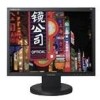Samsung 203B Service Manual - Page 23
Preset Timing Modes
 |
UPC - 729507703824
View all Samsung 203B manuals
Add to My Manuals
Save this manual to your list of manuals |
Page 23 highlights
14 Reference Infomation 14-4 Preset Timing Modes - If the signal transferred from the computer is the same as the following Preset Timing Modes, the screen will be adjusted automatically. However, if the signal differs, the screen may go blank while the power LED is on. Refer to the video card manual and adjust the screen as follows. Table 1. Preset Timing Display Mode MAC, 640 x 480 MAC, 832 x 624 IBM, 640 x 350 IBM, 640 x 480 IBM, 720 x 400 VESA, 640 x 480 VESA, 640 x 480 VESA, 800 x 600 VESA, 800 x 600 VESA, 800 x 600 VESA, 800 x 600 VESA, 1024 x 768 VESA, 1024 x 768 VESA, 1024 x 768 VESA, 1280 x 1024 VESA, 1280 x 1024 VESA, 1600 x 1200 Horizontal Frequency (kHz) 35.000 49.726 31.469 31.469 31.469 37.500 37.861 35.156 37.879 46.875 48.077 48.363 56.476 60.023 63.981 79,976 75.000 Vertical Frequency (Hz) 66.667 74.551 70.086 59.940 70.087 75.000 72.809 56.250 60.317 75.000 72.188 60.004 70.069 75.029 60.020 75,025 60.000 Pixel Clock (MHz) 30.240 57.284 25.175 25.175 28.322 31.500 31.500 36.000 40.000 49.500 50.000 65.000 75.000 78.750 108.00 135,00 162.00 Sync Polarity (H/V) Horizontal Frequency The time to scan one line connecting the right edge to the left edge of the screen horizontally is called Horizontal Cycle and the inverse number of the Horizontal Cycle is called Horizontal Frequency. Unit: kHz Vertical Frequency Like a fluorescent lamp, the screen has to repeat the same image many times per second to display an image to the user. The frequency of this repetition is called Vertical Frequency or Refresh Rate. Unit: Hz 14-6















